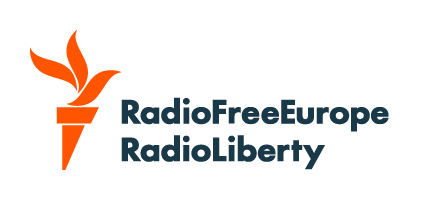When Azerbaijani President Ilham Aliyev snipped a green ribbon to open Lachin International Airport in May 2025, it marked the third, gleaming facility of its kind to be unveiled since 2021 in regions recaptured from ethnic Armenians.
All three airports are located within less than 100 kilometers of each other and remain nearly unused amid a massive construction blitz taking place in and around Nagorno-Karabakh.
Virtually the entire population of more than 100,000 ethnic Armenians fled the territories amid a series of military offensives launched by Baku, which culminated in Azerbaijan's complete takeover of Nagorno-Karabakh in September 2023.
Nagorno-Karabakh had historically been populated by mostly ethnic Armenians, but following the breakup of the Soviet Union, was recognized as part of Azerbaijan.
Baku has touted a "great return" of Azerbaijanis who had fled the First Nagorno-Karabakh War, which broke out in the late 1980s.
Several recent photos of new facilities being opened in and around Nagorno-Karabakh released by Aliyev's office show small crowds of people gathering to mark the events. But aerial photos from the regions are striking, in part, for the loneliness of the landscapes they capture.
Azerbaijani economist Toghrul Valiyev told RFE/RL that Baku claims 30,000-40,000 Azerbaijanis have returned to the regions, but he says due to tight travel restrictions in the area “it’s difficult to find the concrete data.”
Matteo Civillini is one of only a handful western journalists who have accessed the territories. The Italian reported from Nagorno-Karabakh following an official tour in April 2024 ahead of the COP 29 Climate Summit.
Civillini told RFE/RL that the press tour passed through several security checkpoints where journalists had their documents "thoroughly inspected," before entering.
Once inside, he says, the region had a “surreal, slightly dystopian atmosphere," that resembled a vast construction site. "It was striking how very few people actually seemed to live there."
Civillini says he saw "only a handful of other cars on the road," adding, "there was a clear dissonance between the scale of what was being built and the apparent local needs.”
Azerbaijani locals who had fled the First Nagorno-Karabakh War have been offered housing paid for by the state, provided they relocate to the recaptured territories permanently. Many have cited a lack of job opportunities in the region as the main obstacle to returning.
One former resident of the Lachin region said in an interview "I would not consider moving back because I have my job here in Baku." Other displaced rural Azerbaijanis say their villages have become unrecognizable amid the Dubai-like construction drive.
One former resident of Xocali village who fled in the 1990s told RFE/RL's Azerbaijani Service that the authorities were building facilities which are "beautiful, but they are not letting us even keep one chicken. We didn't live in Moscow, we lived in [a village]," she said.
A total expenditure of some $19.5 billion is projected to be spent on reconstruction and resettlement efforts in and around Nagorno-Karabakh.
Economist Valiyev says the massive construction push is in part a way to "redistribute resources," from the flow of petrodollars streaming into state coffers. "Before it was Baku [being rebuilt]," he said, "and now it's Karabakh."


















